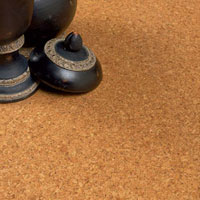Serving Upstate NY—VT—MA • For selections & prices, CALL or EMAIL US
Cork
Wood Flooring Species
Scientific Name:
Quercus suber
Other Names and Species:
Cork Oak
The product commonly referred to as cork is actually the bark of the Cork Oak tree. Once removed, the tree regrows the bark with no lasting damage to the plant. About every 8 to 10 years the bark can be harvested again, making this product a renewable resource.
Origin:
Portugal, Spain, Morocco, Algeria, Tunisia, and the Mediterranean Europe Basin and nearby Atlantic Coastal area.
Appearance:
Comprising a nearly countless number of individual air-filled cells, cork offers a very unique appearance. Depending upon how the flattened bark is cut, cork can reveal any of a number of distinctive surface designs.
Properties:
Cork is impervious to water due to the interconnected nature of its “honeycombed” and airtight cells. The product has strong elastic properties, making it a lower-impact flooring option. Cork is light in weight and is also a good heat insulator. The product is naturally resistant to insect attack and fire when untreated. The wood is reported to have a slight odor.
Janka Hardness:
Cork is a very soft flooring option. Its pliant nature and unique character, however, more than make up for this disadvantage.
Workability:
Because it is a softer product, cork does not offer much resistance to cutting tools.
Principal Uses:
Cork’s most predominant use over the centuries has been as a stopper for bottling due to its water-resistant properties. Other uses include life jackets, buoys, gaskets, flooring, sound dampening products, bulletin boards, paneling, wainscottting, and sub-flooring.






